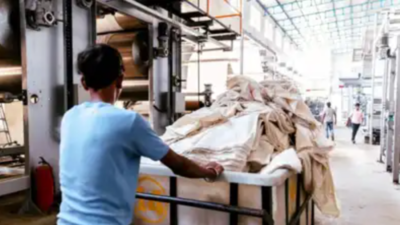Union budget 2025-26: Tamil Nadu apparel industry, domestic supply chain get fillip | Chennai News – The Times of India

CHENNAI: The announcements of duty exemptions for machinery, increased financial incentives and supporting local fibre ecosystem in the Union budget could boost Tamil Nadu’s apparel industry. Imposition of 20% or higher import duty for knitted fabric could potentially boost the domestic man-made fibre (MMF) industry.
“The move will standardise low-value fabrics and stop undervaluation by traders.Currently, there is no domestic ecosystem for new-generation MMF fabrics and players here do not have incentives. The move will create a man-made yarn, knitting and processing ecosystem locally in the medium term that can compete with the Chinese,” said Sunil JhunJhunWala, managing director of Tirupur-based Techno Sportswear.
The industry expected a fine print of an employment linked incentive programme announced in the last budget but there was no mention of that, he added.
R Nandini, chairperson, CII southern region and MD, Chandra Textiles, said while import duty helps domestic industry, it could be disadvantageous for the end-product makers and exporters.
“The budget allocation steeply increased for the technology upgradation fund, production linked incentives can help industry on cost components and help improve margins, while duty exemption for textile machinery will aid in more competitive and qualitative manufacturing of technical textile products,” she said.
Targeted schemes for women entrepreneurs and micro, small and medium scale enterprises (MSMEs) would help the textiles sector, she added.
Cotton mission would boost productivity and production in the country, said K M Subramanian, president of Tirupur Exporters Association. “Today India has no surplus in cotton and has one of the lowest yields of 450kg/hectare against the global average. This programme will provide a big boost to the textile industry,” he said. Putting more money in the hands of the middle class would boost consumption resulting in higher demand for apparels and home textiles, he added.
















